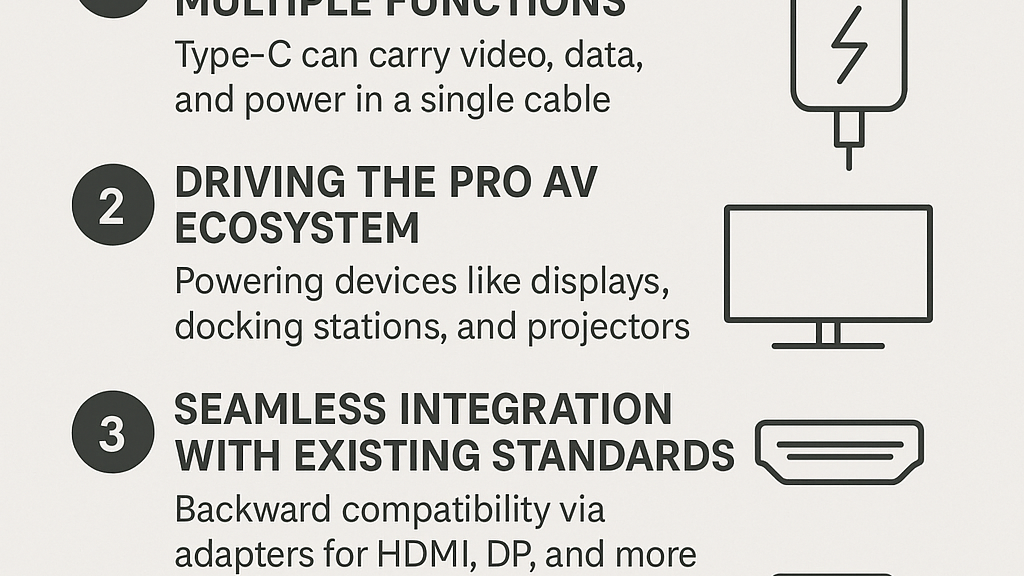Table Of Content
Table Of Content
Enhancing Medical Imaging with Fiber Optic Solutions
In the realm of medical imaging, the demand for high-resolution, reliable, and interference-free imaging solutions is paramount. This is where fiber optic technology shines, offering a range of benefits that make it the ideal choice for medical applications.
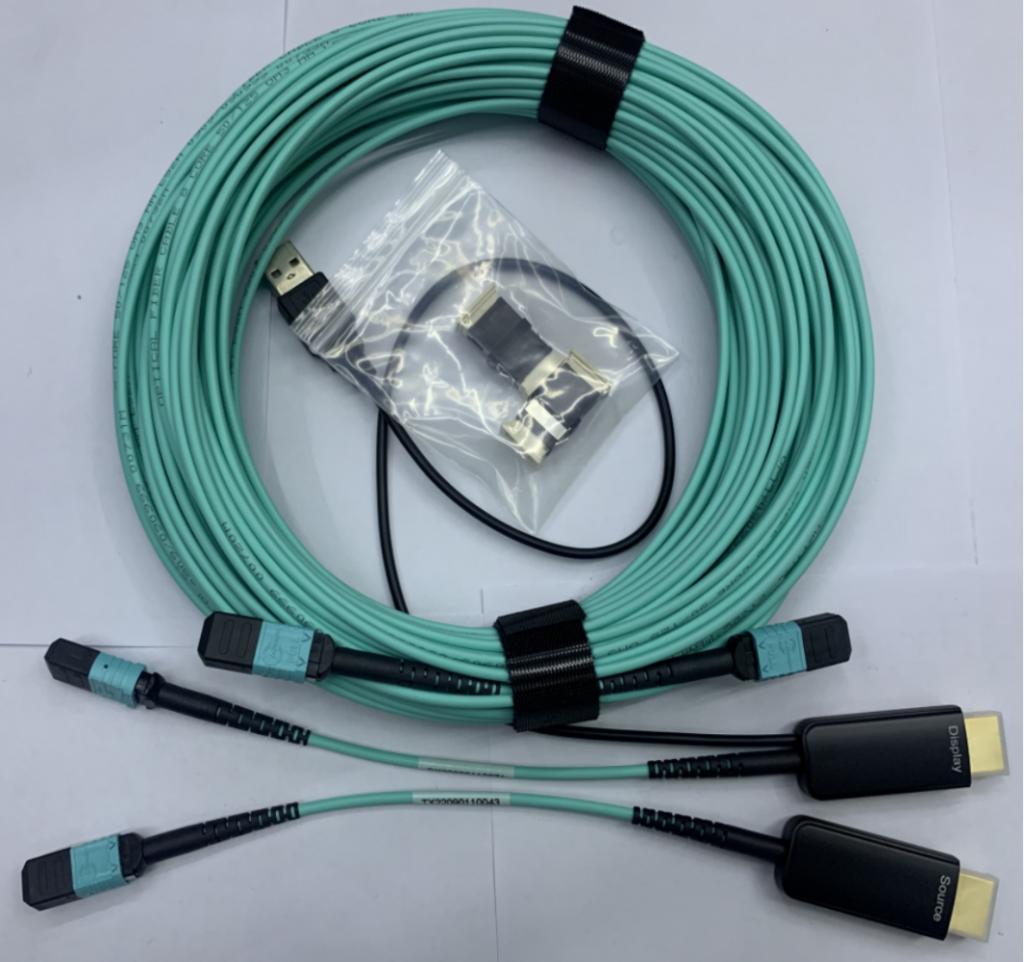
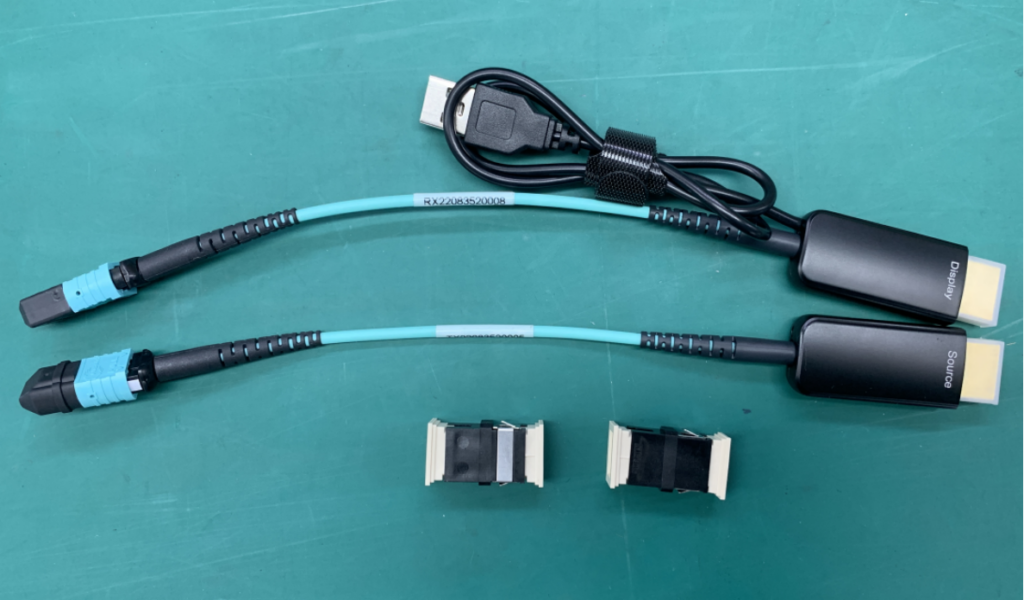
Reason:
Fiber optic solutions offer several key advantages that are particularly beneficial in medical settings:
- No EMI Interference: Unlike traditional copper cables, fiber optics are immune to electromagnetic interference (EMI), ensuring stable and reliable data transmission in sensitive medical environments.
- Ultra High Resolution: Fiber optics support ultra-high resolutions, up to 4K and even 8K, providing crystal-clear imaging for precise medical diagnostics and procedures.
- Compact and Lightweight: Fiber optic cables are small in diameter, lightweight, and flexible, making them easy to install and maneuver in tight spaces often found in medical settings.
- High Bandwidth: With high bandwidth capabilities (10G for USB, 18G for HDMI, 32.4G for DP), fiber optics can handle the large data requirements of modern medical imaging equipment.
- Long-Distance Support: Fiber optic cables can transmit signals over long distances, up to 300 meters, without loss of quality or signal integrity.
- No Crosstalk Interference: Fiber optic cables do not suffer from crosstalk interference, ensuring data privacy and confidentiality in medical imaging applications.

Example:
Consider a modern operating room equipped with multiple high-resolution screens and cameras. These devices require long-distance signal transmission with stringent EMI requirements to avoid interference. Fiber optic HDMI and DP cables provide a perfect solution, ensuring reliable, high-quality video transmission without EMI issues.
Analysis:
In medical imaging equipment like B-ultrasound machines, fiber optic solutions offer unique advantages. They can support long-distance video capture while being highly crush-resistant, making them ideal for applications where cables are frequently moved or trampled. Additionally, the use of fiber optics ensures EMI resistance, critical for maintaining the integrity of medical imaging data.
Next Steps:
For medical imaging equipment such as nuclear magnetic resonance (NMR) machines, EMI is a significant concern. Fiber optic solutions enable HDMI/USB/DP signals to be transmitted over long distances without generating magnetic fields, ensuring the safety and stability of these critical medical devices.
In conclusion, fiber optic solutions play a crucial role in enhancing medical imaging equipment’s performance, reliability, and safety. Their ability to provide interference-free, high-resolution imaging makes them indispensable in modern medical settings.


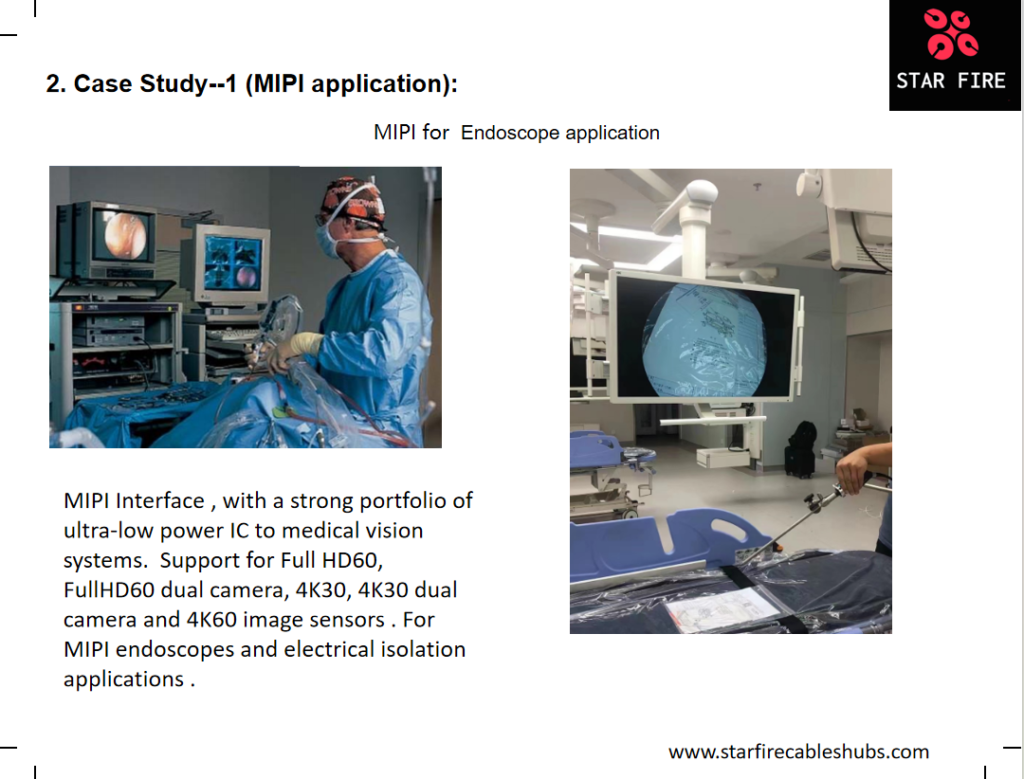
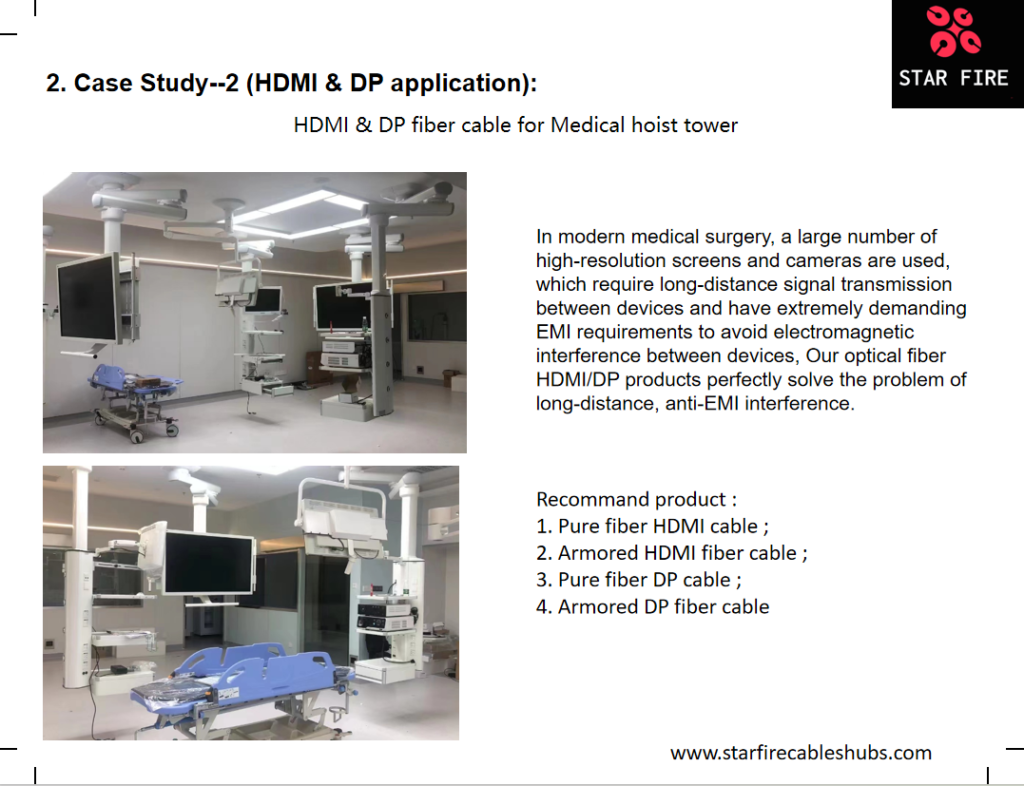

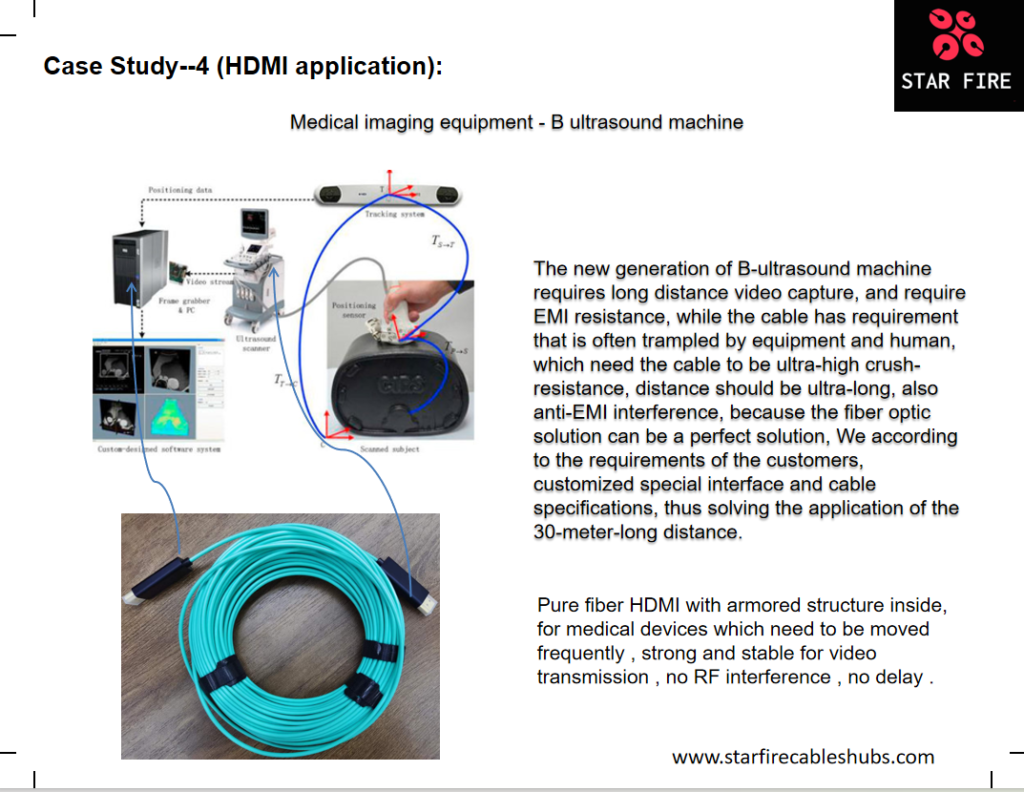

If you have any inquiry for Medical Imaging with Fiber Optic Solutions, Pls. contact us at sales@starfiretechcn.com






